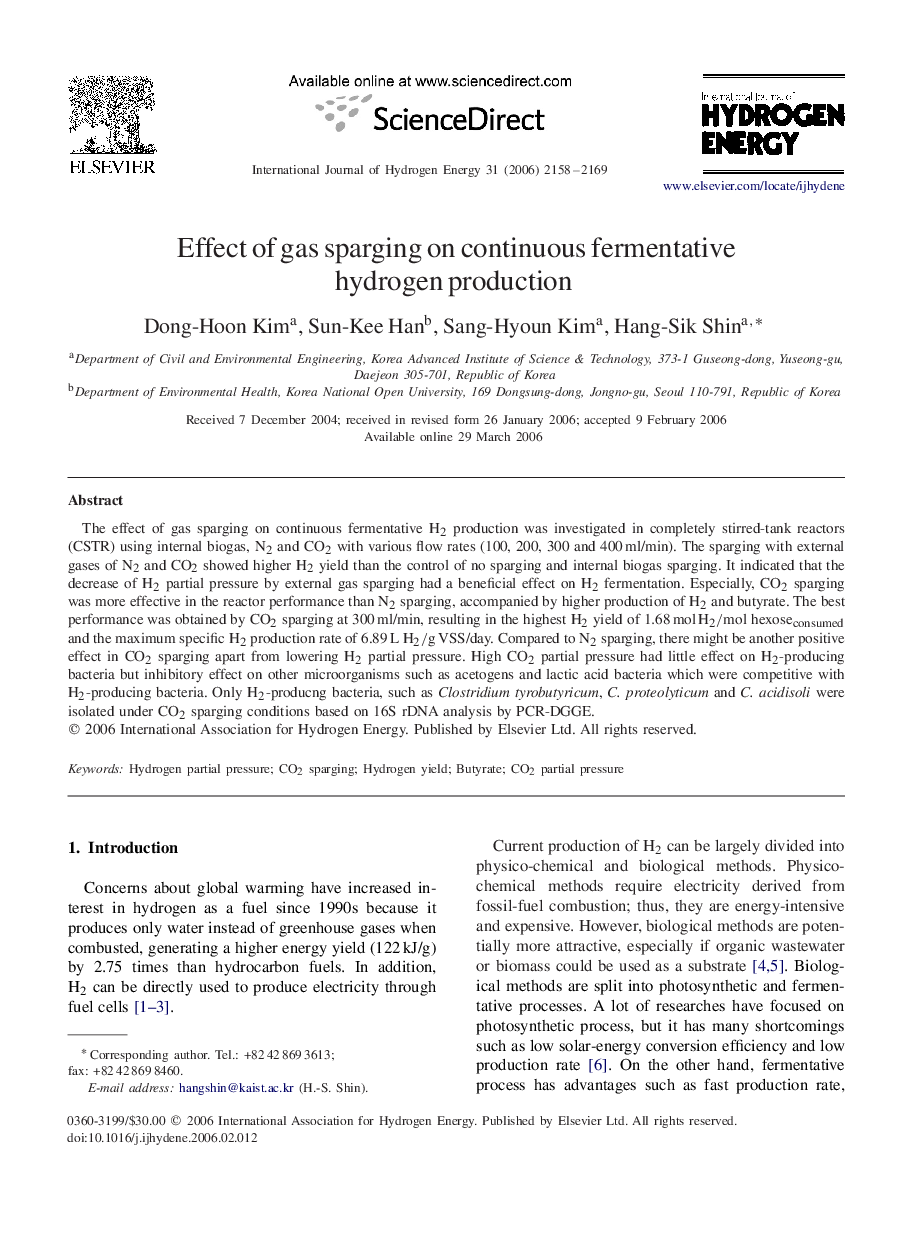| Article ID | Journal | Published Year | Pages | File Type |
|---|---|---|---|---|
| 1280384 | International Journal of Hydrogen Energy | 2006 | 12 Pages |
The effect of gas sparging on continuous fermentative H2H2 production was investigated in completely stirred-tank reactors (CSTR) using internal biogas, N2N2 and CO2CO2 with various flow rates (100, 200, 300 and 400 ml/min). The sparging with external gases of N2N2 and CO2CO2 showed higher H2H2 yield than the control of no sparging and internal biogas sparging. It indicated that the decrease of H2H2 partial pressure by external gas sparging had a beneficial effect on H2H2 fermentation. Especially, CO2CO2 sparging was more effective in the reactor performance than N2N2 sparging, accompanied by higher production of H2H2 and butyrate. The best performance was obtained by CO2CO2 sparging at 300 ml/min, resulting in the highest H2H2 yield of 1.68molH2/molhexoseconsumedhexoseconsumed and the maximum specific H2H2 production rate of 6.89 L H2/gH2/g VSS/day. Compared to N2N2 sparging, there might be another positive effect in CO2CO2 sparging apart from lowering H2H2 partial pressure. High CO2CO2 partial pressure had little effect on H2H2-producing bacteria but inhibitory effect on other microorganisms such as acetogens and lactic acid bacteria which were competitive with H2H2-producing bacteria. Only H2H2-producng bacteria, such as Clostridium tyrobutyricum, C. proteolyticum and C. acidisoli were isolated under CO2CO2 sparging conditions based on 16S rDNA analysis by PCR-DGGE.
